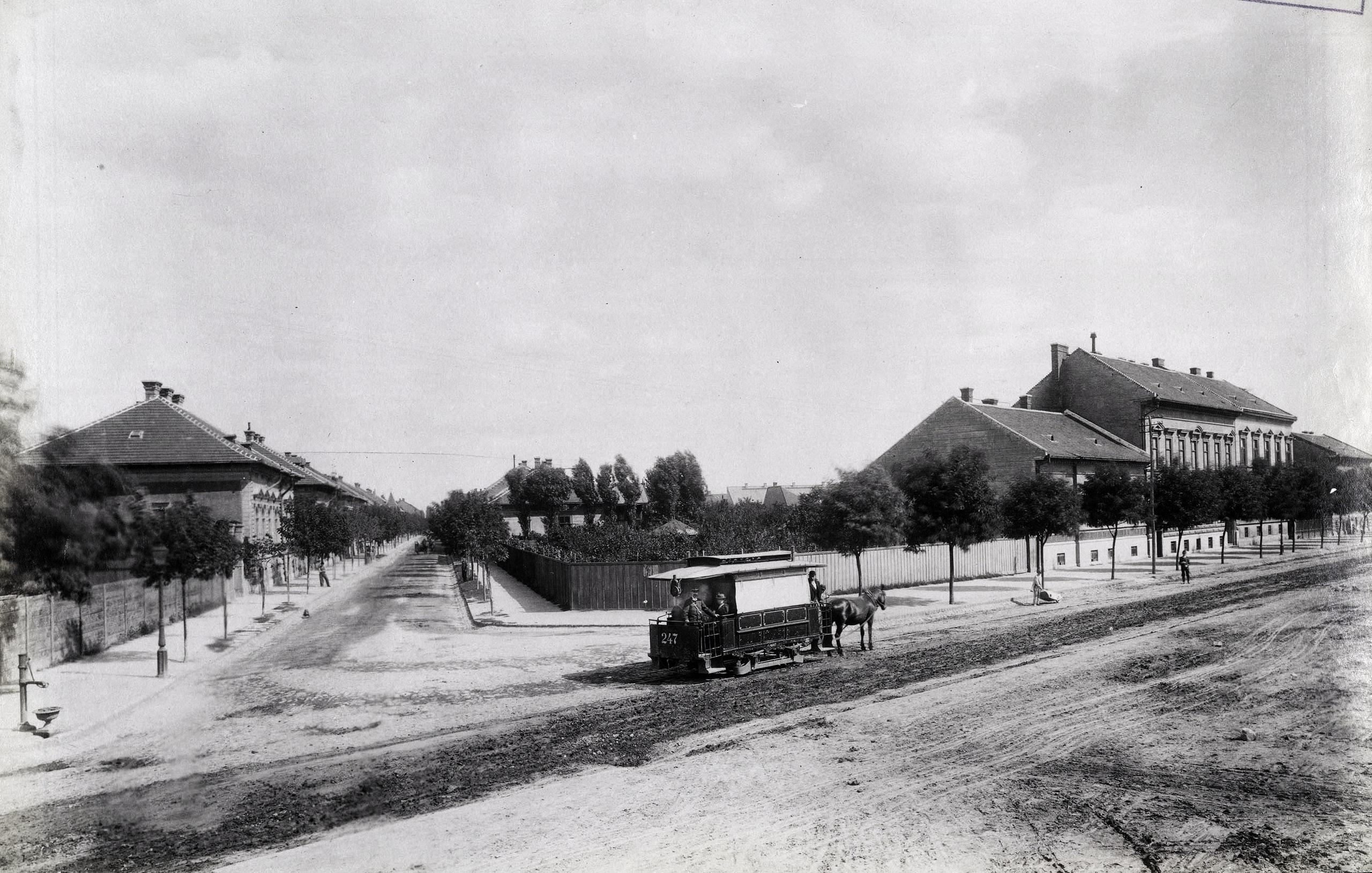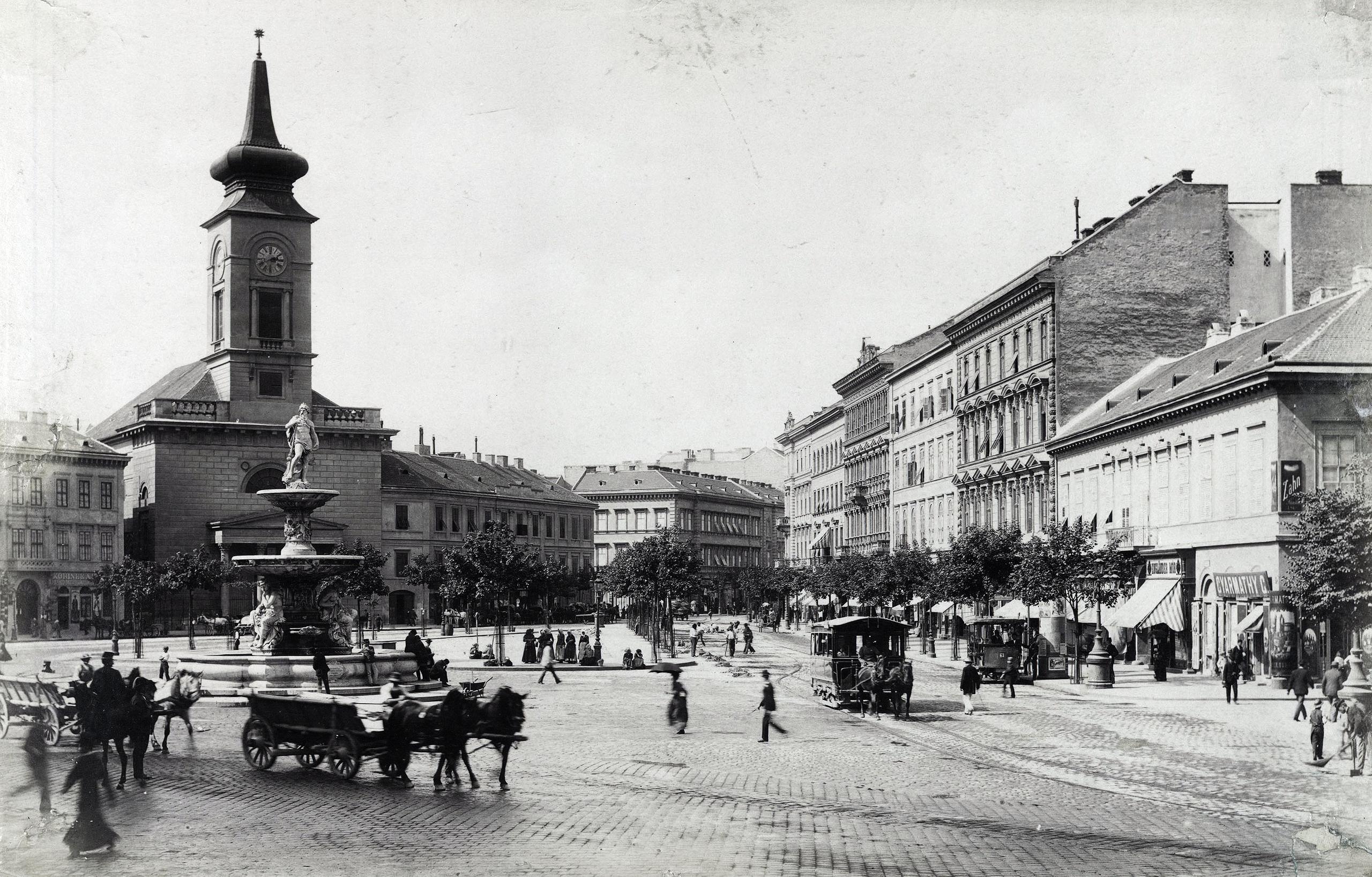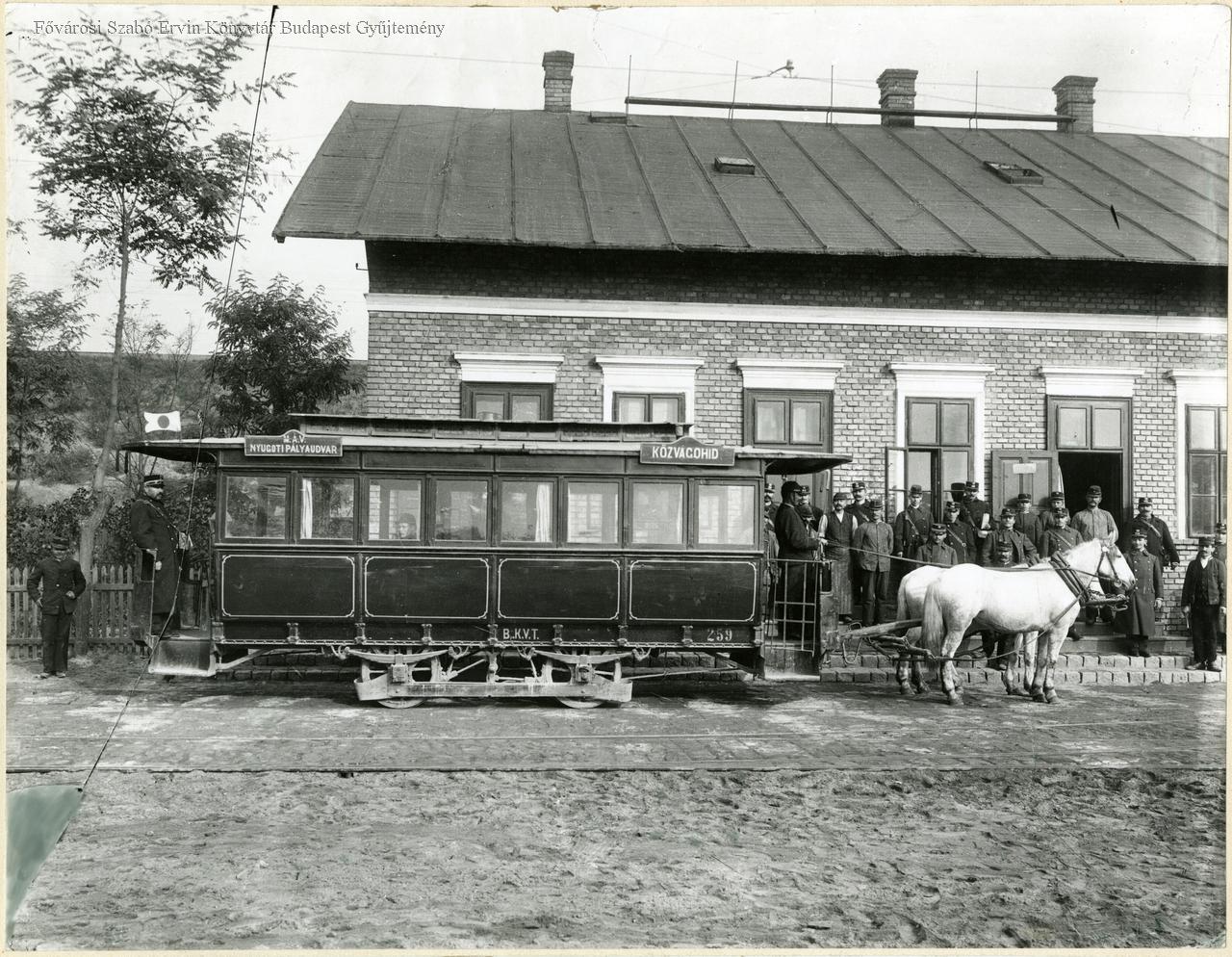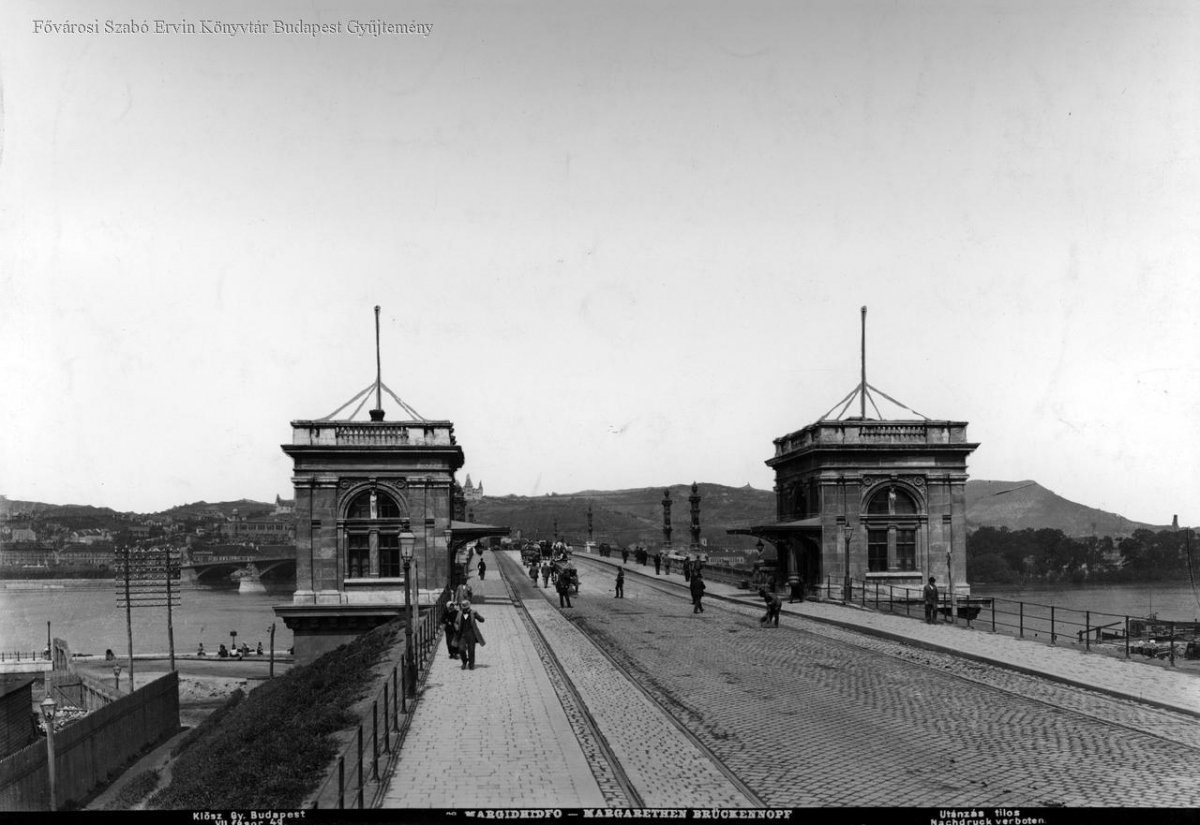For several decades, public transport in Budapest was represented by the horse-drawn railway and the omnibus. The horse-drawn railway networks were controlled by two companies, the Pest Public Road Rail Tracks Company (PKVT) and the Buda Public Road Rail Tracks Company (BKVT). The PKVT was founded by Sándor Károlyi in 1865 and built its network in Pest, while the first line of the BKVT in Buda opened in 1868 and ran from the Chain Bridge Buda bridgehead to Óbuda.
The two companies did not disturb each other's circles much, since they were separated by the Danube, and it was not possible to run a horse-drawn railway over the Chain Bridge. In terms of size, the PKVT was larger, since a more extensive network was needed on the Pest side than on the Buda side, which is much smaller in terms of area, and the geographical conditions were also more favourable for the expansion of the Pest side, but of course, more and more lines were established on the Buda side as well.

Horse-drawn railway on Orczy Road after 1890 (Photo: Fortepan/Budapest Archives, Reference No.: HU.BFL.XV.19.d.1.05.148)
The opportunity to connect the two networks opened up in the 1870s, as the government wanted to build a new bridge at the southern end of Margit Island. It was already a good deal to have a horse-drawn railway running between Pest and Buda, which was made even better by the fact that the planned bridge connected the two most important railway stations of Buda and Pest, the Buda depot of the Southern Railway and the Pest station of the Central Railway. However, the government has stated that it will only grant permission for horse-drawn carriages to operate on the new bridge if the future operator pays the additional cost of the bridge if it is built wider due to horse-drawn carriages. This amount was 270,000 HUF, which in itself was not a small amount, but in fact, it was barely 5.4 per cent of the total cost of the Margit Bridge - since it was about this bridge.
Both companies wanted to acquire the right to exclusive traffic, but their financial conditions were not the same. The company in Buda was much smaller than the one in Pest, while the PKVT obtained the requested amount in barely a quarter of a year, the company in Buda collected it in almost two years. In addition, the Pest company operated profitably, while the Buda one did not, PKVT generated a business income of 153,685 HUF in 1876, while the Buda company closed with a 16,000 HUF loss.

Horse-drawn railway in traffic on Kálvin Square in the 1890s (Photo: Fortepan/Budapest Archives, Reference No.: HU.BFL.XV.19.d.1.05.148)
Margit Bridge was opened in 1876, and although it would have been suitable for a horse-drawn railway, none of the companies paid the required amount, so the horse-drawn railway did not start here. In the background, however, serious bargaining was going on. In order to obtain the exclusive right to travel on the bridge, the companies would also have undertaken to extend their own network on the other side, i.e., PKVT would have built a line in Buda, while BKVT would have built a line in Pest.
Of course, the negotiations did not lead to a result, they bargained and discussed for a long time, but did not come to an agreement. In the end, the fruitless negotiations were put to an end by the fact that PKVT simply cut through this Gordian knot and applied as a buyer for the Buda company. The buyer offered 110,000 HUF, and finally, 145 years ago, on 2 February 1878, the settlement was reached. The 7 February 1878 issue of the newspaper Hon reported on the business as follows:
"The long negotiations, which the Pest Public Road Rail Tracks conducted with Buda in the matter of the purchase of the latter, in order to obtain the right to connect the lines running on the two sides of the capital at the Margit Bridge, as we are informed, finally led to an agreement. The purchase price was set at 110,000 HUF. But since the Pest Public Road Rail Tracks Company acquires the Buda lines only for the planned connection, according to the agreement, the purchase is subject to the condition that the Pest Public Road Rail Tracks receives permission for the bridge track. The Pest company would pay the purchase price in 6 per cent bonds. There can be no doubt that the public works council and the government will grant the permit, partly because the Margit Bridge was built wider than normal due to the road track, and partly because the merger of the two horse-drawn railways is a long-standing wish of the capital's public."
There were two conditions for the contract signed on 2 February to come into effect: one, that the capital transfer the license of the Buda company to Pest, and at the same time extend it by 10 years, and the other, that an agreement be reached with the government for traffic on the Margit Bridge.

Horse-drawn railway station at the Közvágóhíd (Public Slaughterhouse) in the 1880s (Photo: FSZEK Budapest Collection)
After the conclusion of the contract, the parties still had long negotiations, but the new company, Budapesti Public Road Rail Tracks Company (Bp. K.V.T.), negotiated with the government. For a short time, the company used the Bp.K.V.T. brand, then switched to BKVT (which abbreviation was the same as the company in Buda before 1878).
The capital agreed to the transfer and extension of the licenses under certain conditions - for example, they requested the introduction of transfer tickets - and on 10 February 1879, i.e., more than a year after the merger of the two companies, the Budapest Public Road Rail Tracks Company signed a contract with the Ministry of Finance on the use of the bridge. they agreed to pay in instalments, and thus the first horse-drawn carriage passed over the bridge on 21 June 1879.
Cover photo: Margit Bridge with railway tracks in the 1880s (Photo: FSZEK Budapest Collection)




































Hozzászólások
Log in or register to comment!
Login Registration